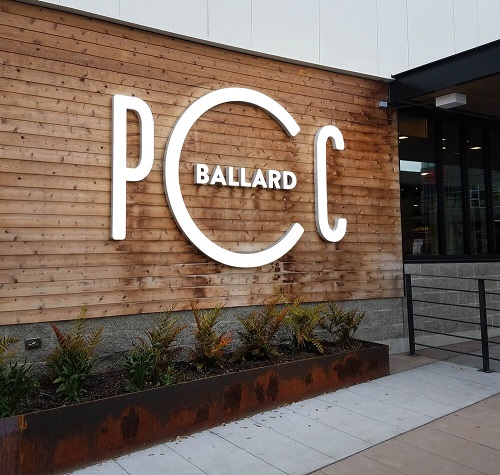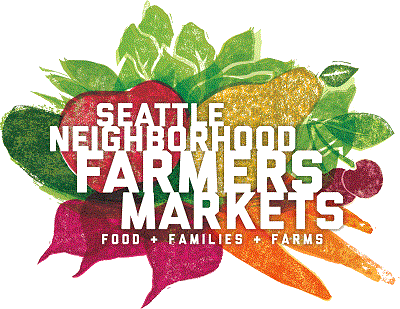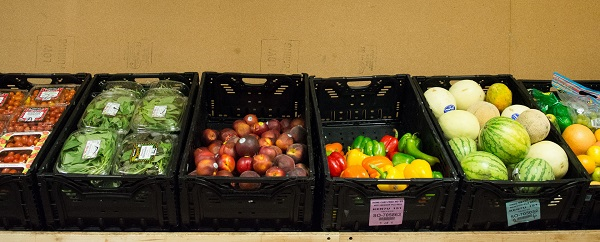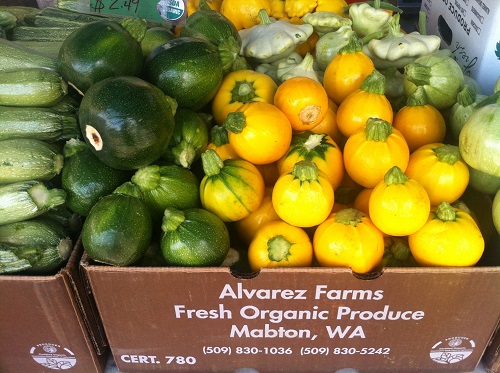For more than three decades, PCC Community Markets, a natural foods retailer with 15 locations in the greater Seattle area, has supported local food banks with its shopper-funded food bank program.
When the coronavirus crisis hit last year, many aspects of the food supply chain were significantly impacted, which, in turn, affected food banks.

“Donations to food banks from grocery stores dramatically decreased due to shopping behaviors at the onset of the pandemic,” said Rachel Tefft, community nutrition program manager on PCC’s social and environmental responsibility team. “These donations are a large source of fresh produce at that time of year for many food banks.”
At the same time that food banks were losing fresh produce donations, farmers market closures and a massive decrease in foodservice demand were leaving many local farms without a place to sell their produce.
“Donations to food banks from grocery stores dramatically decreased due to shopping behaviors at the onset of the pandemic. These donations are a large source of fresh produce at that time of year for many food banks.” -Rachel Tefft
In March 2020, Seattle Neighborhood Farmers Markets (NFM), which had closed all its locations in response to the pandemic, contacted PCC asking if the retailer could help NFM’s produce vendors find another sales outlet for their products.

Within a week, PCC and NFM had come up with a solution. They developed a farm-to-food bank program connecting 16 local food banks with 14 local farms, 11 of which were either certified organic or organically managed. (The certified organic farms included Regino Farm, Alvarez Organic Farms, Kirsop Farm, Mariposa Farm, AG Family Farms, Canales Farm, and Farias Farm.)
At the same time that food banks were losing fresh produce donations, farmers market closures and a massive decrease in foodservice demand were leaving many local farms without a place to sell their produce.
PCC and NFM also enlisted a third Seattle-based organization—Harvest Against Hunger—to assist with the program. Prior to COVID, Harvest Against Hunger (HAH) had already been managing two farm-to-food pantry initiatives, so it was able to advise PCC and NFM on how to best facilitate relationships between farms and food banks.
The three organizations decided to implement a CSA-style model in which participating farms would be paid a lump sum up front. Then throughout the growing season, the food banks could order a certain amount of fresh produce per week based on what the farms had available at that time, and the farms would be in charge of making the deliveries.
Prior to COVID, Harvest Against Hunger (HAH) had already been managing two farm-to-food pantry initiatives, so it was able to advise PCC and NFM on how to best facilitate relationships between farms and food banks.
PCC initially committed $80,000 from its shopper-funded food bank fund to start the program, and to date it has contributed a total of $212,000. One hundred percent of the money goes to the farms (PCC does not take a percentage for administrative costs).
PCC Community Markets, Ballard location
“The foundation of this program is relationships,” said PCC’s Tefft. “We surveyed the farms identified by Seattle Neighborhood Farmers Markets in greatest need of financial support along with our food bank partners to identify who might work well together in terms of coordinating what products were needed and when farms could deliver them.”
Even though a handful of Seattle farmers market locations reopened last April and June, PCC and its partners (HAH and NFM) have decided to keep the farm-to-food bank program going.
PCC initially committed $80,000 from its shopper-funded food bank fund to start the program, and to date it has contributed a total of $212,000.
“Both farms and food banks have reported positive outcomes and interest in seeing the program continue,” said Maddie Price, farm to community program manager with HAH. “Continuing this program makes sense because we're not nearly ‘out of the woods’ with COVID-19 and its economic impacts. Food insecurity is still high, and farms' usual sales outlets haven't returned to ‘normal.’ … Besides ensuring that everyone can achieve food and nutritional security—on a local level, funding small farm-to-food bank relationships helps to tip the scales toward a more resilient and sustainable food system.”

Produce offerings at Des Moines Area Food Bank, a PCC food bank partner
In response to an anonymous survey about the program conducted by HAH, one participating farm shared, “The advance payments in the spring are extremely helpful to pay for upfront costs that sometimes cause us stress. Having a ‘contract order’ that is dependable and yet flexible makes our weekly harvest planning more smooth and efficient.”
“Continuing this program makes sense because we're not nearly ‘out of the woods’ with COVID-19 and its economic impacts. Food insecurity is still high, and farms' usual sales outlets haven't returned to ‘normal.'" -Maddie Price
The food banks have also been really happy with the new program. "We were able to order more local, organic items at a fair price,” shared one of the participating food banks in an anonymous survey conducted by PCC. “We really enjoyed being able to order more satisfying items that clients ask for like garlic, basil, cucumbers, and tomatoes."
Because seven of the participating farms are certified organic (and four more are organically managed), the program has been able to make a significant amount of organic produce available to local residents experiencing food insecurity.

Fresh produce from one of PCC's farm-to-food bank partners, Alvarez Organic Farms
“All people need nutritious, safe food to live heathy lives, and organically grown produce is found to contain higher concentrations of micronutrients and fewer pesticide residues than conventionally grown produce,” said Price. “We are working to reduce barriers so that more people can access organic food, if they would like, while continuing to support the farmers and making sure they are being compensated well for their work.”
Tefft said the program has had “a variety of unintended positive consequences, such as giving small family farms an opportunity to step into a wholesale market and providing an avenue to specific products that food banks had never previously been able to offer their clientele.”
“We are working to reduce barriers so that more people can access organic food, if they would like, while continuing to support the farmers and making sure they are being compensated well for their work.” -Maddie Price
Asked if she had any advice for retailers interested in starting similar programs, Tefft said, “Grocers can play a very important role in supporting the local food system—sharing resources such as relationships with vendors or local nonprofits, raising funds from community, [and] educating the public regarding how they can best contribute.”
Produce Department of PCC Community Market in Ballard, Washington
Tefft said PCC and its partners are currently in the midst of creating the CSA-style contracts between farms and food banks for this upcoming growing season.
“Food banks are still experiencing a high demand, and local farmers provide stable relationships that can continue long after the pandemic is over,” said Jennifer Antos, executive director of NFM. “With restaurant closures and farmers markets still under COVID restrictions that limit the number of vendors and shoppers, farmers are seeking new sales opportunities to maintain their businesses and production. These relationships between farms and food banks can be long-lasting and continue to strengthen the local food system. Both parties fill a need for the other, not just during times of emergency.”






